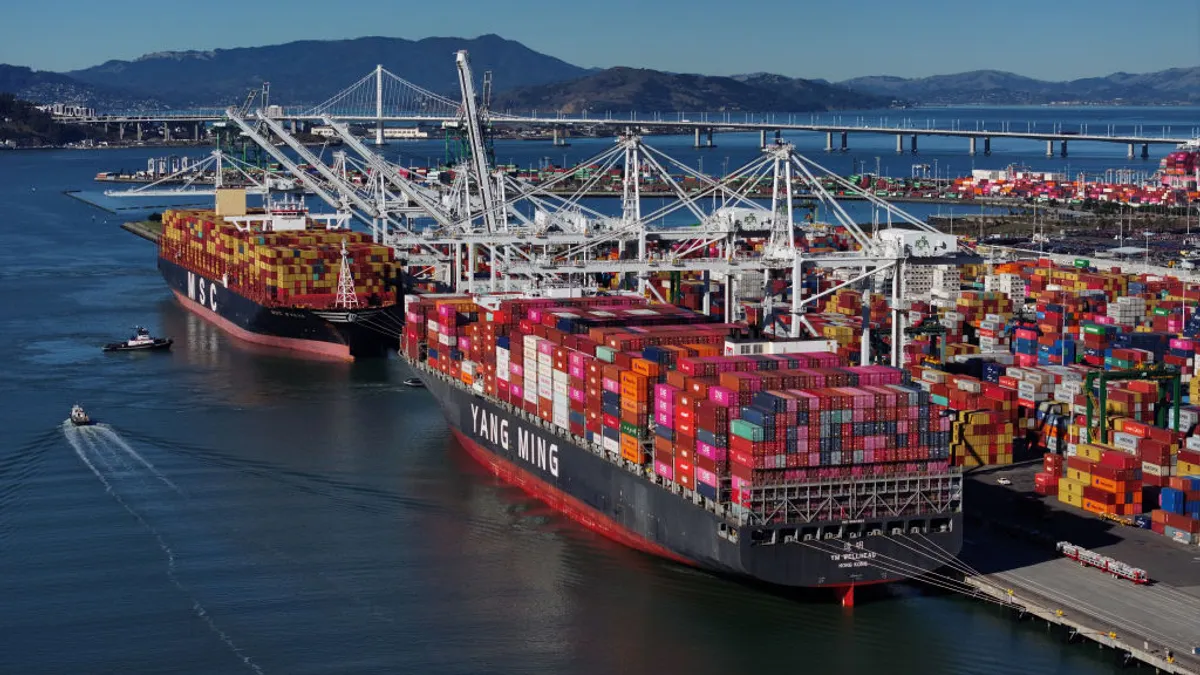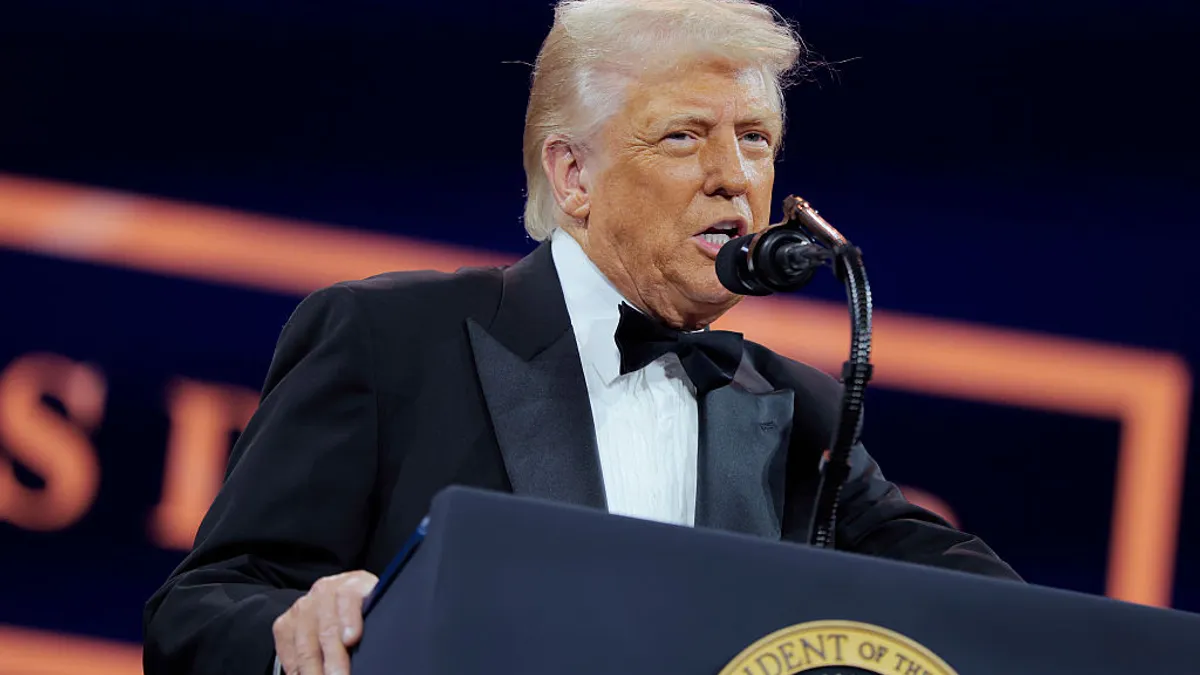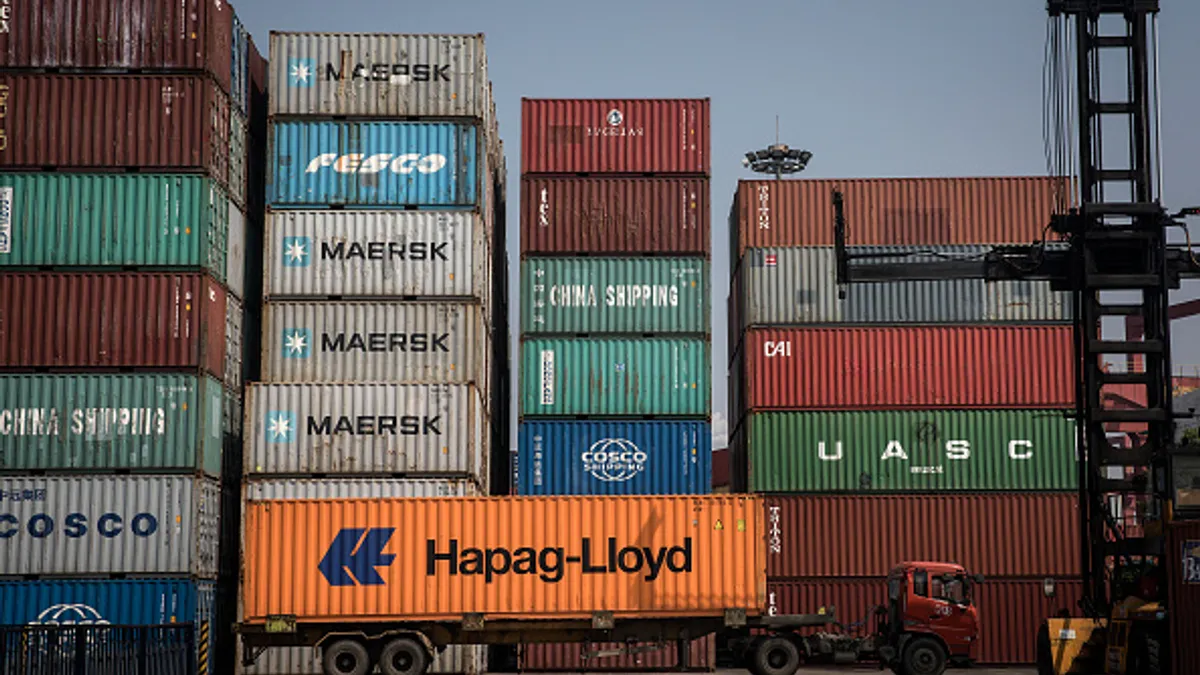Editor's Note: This article is part of a series on changes in trade policy under the Trump administration. All stories in this series can be found here.
Tensions have run high between the United States and Mexico, as talk of President Trump’s border wall, renegotiation of the North American Free Trade Agreement (NAFTA) and a Twitter row over a potential import tax brought bilateral relations to a new low.
As uncertainty prevails over the future of Mexican-American relations — with some even going as far as to suggest a trade war may be possible amidst the rising tensions — the markets reacted in kind.
It all began during the weekend of Trump’s inauguration, when officials leaked that the President would sign on Monday executive orders signaling a withdrawal from the Trans-Pacific Partnership (TPP) and seeking a renegotiation of NAFTA. On Wednesday — the day top Mexican officials were to meet at The White House — Trump signed an order to build a southern border wall. On Thursday, Trump tweeted that it would be better to cancel the meeting with Mexican President Enrique Peña Nieto if Mexico was unwilling to pay for the wall.
Mexico struck back. Over the course of the week, and following the rhetoric over the border wall and taxing remittances, business leaders in Mexico devised a new strategy for dealing with Trump. President Nieto made clear that Mexico would place everything on the table, including withdrawing from NAFTA itself. On Thursday, when Trump tweeted about cancelling the meeting, the Mexican President canceled his trip.
By Friday, in the midst of the feud, White House Press Secretary Sean Spicer announced that the White House was considering a 20% tax on goods imported for Mexico, but clarifed later it was part of the GOP’s overall tax reform initiative that would affect all imported goods. Later in the afternoon, the two Presidents released a joint statement stating they would resolve their issues privately.
In the first week of Trump’s presidency, the Mexican peso dropped 3.2%, and an old alliance seemed shaken by wide differences in trade policy. As threats of tariffs and withdrawals were thrown around, one question rose to the surface: what will happen to NAFTA?
What will happen to NAFTA?
President Trump has long made his intent to renegotiate NAFTA evident, even threatening to withdraw if Mexico and Canada refused to come to the table. Fortunately, both the President Nieto and Canadian Prime Minister Justin Trudeau have declared their willingness to cooperate on a renegotiation, making such an aggressive move unlikely.
But even if Trump — or his counterparts in Mexico or Canada — were to decide to withdraw unilaterally, no party could do so immediately. The agreement itself requires any party to provide the others with written intent of withdrawal 180 days advance of the actual action.
"More and more it's appearing that [it will be] renegotiation or some version of renegotiation," Christopher Wilson, deputy director at the Woodrow Wilson Center for International Affairs' Mexico Institute told Supply Chain Dive.
Everything is on the table, but a well-intentioned renegotiation would focus on modernizing the decades-old agreement.

Supply Chain Dive
Recent reports indicate Mexico has begun its internal consultation process in preparation for new talks, which could begin at the earliest this May. But even if a renegotiation is almost guaranteed, it does not mean it will be agreed upon quickly; after all, the TPP took eight years to conclude, and the original NAFTA negotiations took two years.
What’s more, some would argue the TPP negotiations were already a renegotiation of NAFTA. A clause within the TPP document stated the new agreement would supersede any previous trade agreements, and Mexico and Canada both agreed to these conditions upon signing the TPP. Trump may have a specific set of demands to make from the two neighbor countries, but much of the initial legwork was already done under the Obama administration(as long as the three countries cooperate).
"That's precisely the reason why Mexico and Canada really wanted to make sure they were a part of the Trans-Pacific Partnership agreement,” Wilson added. “It was a way to make sure that as the agreement was being updated they were party to the newest best trade agreement that was out there in terms of providing access to the U.S. market."
A modernized agreement
What then can businesses and supply chain managers expect to be the main issues in the case of renegotiation?
Everything is on the table, according to the Mexican President, but a well-intentioned renegotiation would focus on modernizing the decades-old agreement. "NAFTA was a cutting-edge trade agreement 20-25 years ago, as it was being negotiated, but it no longer is," Wilson told Supply Chain Dive.
"I think that there certainly are products and disciplines that didn’t exist because the technology didn’t exist at the time, so there are no provisions regarding these things," he added. "Data flows is a part of that, other regulations regarding e-commerce is a part of that, biologic drugs are a part of that."
Updating the agreement may not be too controversial for win-win situations, but certain topics — like environmental and labor standards or rules of origin — may prove more thorny. In particular, Wilson adds, the Trump administration may push stronger enforcement mechanisms in the treaty, which the original treaty was infamously lacking.
"The world of global-value chains really means that if you start chopping off FTAs you're putting yourself at risk rather than those countries you're trying to pressure."

Christopher Wilson
Deputy Director, Mexico Institute, Woodrow Wilson Center for International Affairs
"The main set of compliance that I would speculate the Trump administration would push on relate to things like dumping and retaliatory tariffs," he said. "The other area where I could see enforcement has to do with triangulation – so moving products around in a way that would try to evade tariffs … and that's something that we could see along with some of the other enforcement mechanisms."
A risk and an opportunity
In the meantime, companies may benefit from seeing a renegotiation as an opportunity (with some risks) to continue integrating North America’s economy and secure better terms of trade for business.
If withdrawal ever seems imminent, however, business leaders can take solace in the fact there is at least a 180-day buffer before new rules come into play. Yet Wilson notes that withdrawing from the deal altogether threatens to hurt those Trump seeks to help with a new deal.
"I think the fundamental goal of President-elect Trump's trade policies, as he articulated during the campaign is to protect American workers," Wilson said. But, "the world of global-value chains really means that if you start chopping off [Free Trade Agreements] you're putting yourself at risk rather than those countries you're trying to pressure."
"So that's the challenge that incoming officials in the Trump administration will be facing: How is it that they can fulfill campaign promises while truly protecting the U.S. economy, which depends not just on exports but also imports for our competitiveness."






















